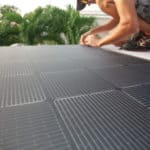
MENUMENU
TALK TO AN EXPERT
Special Hours: 7AM – 6PM PST
TALK TO AN EXPERT
Special Hours: 7AM – 6PM PST
Switching from a traditional job in a physical location to remote work has been a trend for the past several years. There will always be jobs that must take place in person, but many can now go remote. Internet connections have become more robust, cellular phones are the norm, and phone signals are broader and better than ever.
People have been rethinking the traditional workplace thanks to advancing technology and the recent shift in work culture. Thanks to this remote lifestyle, more people than ever have opted for the mobile lifestyle of an RV or liveaboard boat.
But how can you power your remote work when you’re out adventuring? Let’s dive in.
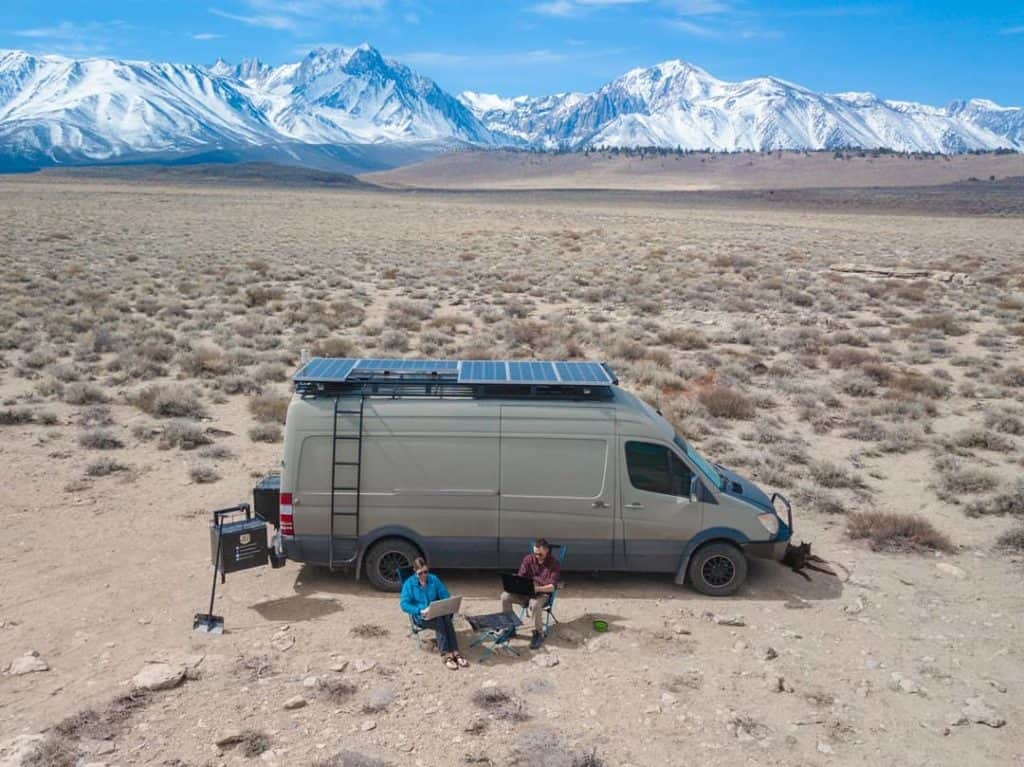
In its essence, working remotely is simply working outside of a traditional office setting. You’ll connect with the office through phone calls, emails, online chats, and productivity software.
Working remotely in an RV or on a boat can mean sitting inside your mobile rig doing work on a computer. You can have your cell phone at the ready with internet beaming in from a cell tower or satellite. It can even mean working while sitting near the woods or soaking in the sunshine on your boat deck.
In a sticks-and-bricks home, internet connections, phone service, and electricity come easily. When you’re in an RV or on a boat, powering your devices and connecting to the internet requires much more thought.
Connectivity and power are two of the primary considerations when living a mobile lifestyle and working remotely.
Working remotely usually means you need reliable internet connectivity. This may look different depending on your work, but it’s often a struggle when you’re on the move. RV parks might have shoddy internet connections, and many remote docks don’t get a great connection.
That’s why most people living nomadically will have their own systems for connecting to the internet. Often, it means connecting via cellular services and other equipment like antennas, cellular boosters, and routers.
Oftentimes, especially if your job relies heavily on being connected, it also means having redundant systems in place, such as multiple cellular data plans or even satellite-based connectivity.
Satellite internet is another great option. Starlink, for example, is supposed to offer internet connection worldwide, even on the ocean. Connectivity is never guaranteed, but satellite internet like this is among the best options for those on the road.
Even if you can stay connected, all the equipment–boosters, routers, computers, etc.–needs power. Outlets aren’t always easy to find when you’re RVing or boating. Most mobile vehicles have batteries, generators, solar panels, or other ways to create power, but it’s certainly not as easy to generate when you’re on the go.
You’ll also want a couple of options for your power sources. If one option fails, you need a fallback plan.

There will be times when you want to be isolated and off-the-grid. That typically means no shore power. So how do you work and stay connected when going off-grid?
Having off-grid power means having your own power source and a place to store it. Power generation can come in several forms. Many travelers use solar panels, a generator, or your vehicle’s engine. Having an off-grid power source is useful even if you don’t go off-grid often. On travel days, you might need to work while your significant other drives. Or maybe your laptop dies, or you can’t find a good connection on your route.
However, the best way to power your computers and other work-critical devices is to have a reliable and capable lithium battery bank. This will allow you to easily pull power when you need it, without needing enough solar panels, sunlight, or running your generator for 8 hours a day.
“Our Battle Born Batteries keep all our work devices charged and ready to go, so we can work from anywhere. We charge our computers, cameras, and video equipment as well as our mobile routers and hotspots.”
Danielle Boucek of SlowCarFastHome
Plugging into shore power is the easiest way to power your remote work lifestyle, but you have a couple of options beyond that.
While moving from one destination to another, you can often pull energy from your vehicle’s engine. You can also use solar power, an easy, renewable energy source. With fixed or mobile solar panels, you can collect solar power and store it in a battery bank.
Solar is a great option, but if your days are overcast, or you need energy throughout the night, you might want a backup generator. It can power devices and charge your battery bank to save energy for later use. You’ll need fuel on hand to operate it, and it can be very noisy, so it’s not always ideal. But it’s a reliable way to get power on the go.
Whether you opt for solar power or a generator (or both), the key element is your battery bank. A battery bank is a series of batteries wired together to provide enough energy storage for your power needs.
Your batteries must have adequate capacity and a high enough amp-hour rating to handle the workload put on them. That’s why many remote workers opt for lithium batteries when building out a battery bank. They supply consistent power for a longer span throughout a day before recharging, but they also last much longer than lead-acid batteries.
“[Battle Born lithium batteries] allow us to go off-grid whenever and wherever we want without worrying about if we will have power or not.”
Janae of Adventures With TuckNae
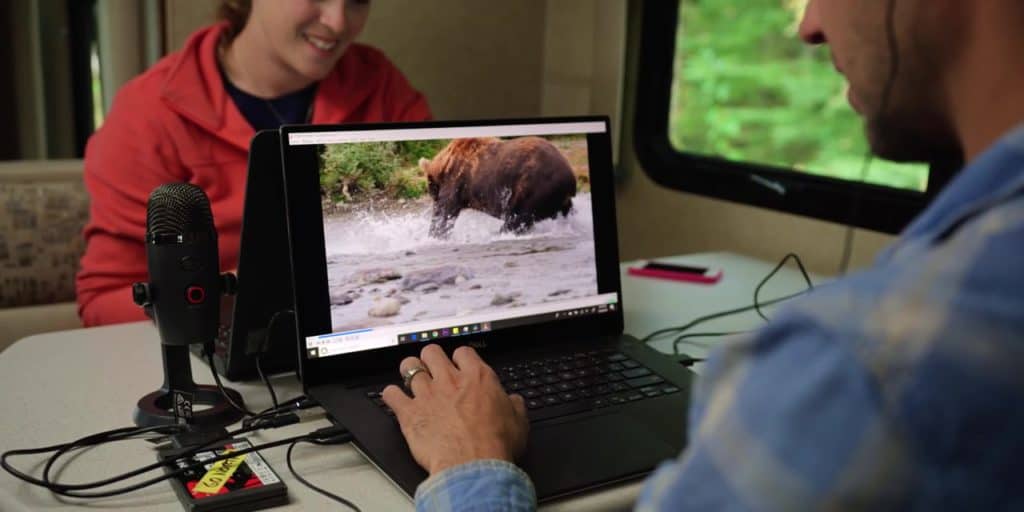
When working remotely, there are many small power draws that add up. Most commonly, remote workers on the road or water need laptops, cell phones, routers, cell boosters, cameras, printers/scanners, and other power-hogging equipment.
Don’t forget the various applications you’ll need if you’re living or staying in an RV or boat while you work. You’ll likely need climate control (heat or air conditioning), a space heater or fans, pumps, inverters, and lights. If you need to cook, you’ll need power for your refrigerator, microwave, toaster, coffee maker, oven/stovetop, etc. You might also run a washer and dryer, hairdryer, or other appliances while you’re living and working remotely.
→ Learn how to size your lithium-ion battery system.
While you might not use the items listed in the previous section at the same time you’re working, you don’t want to discount them. You’ll need enough power in a day to cover both your remote work responsibilities and your daily living situation.
“Because we do a lot of DIY work on board [our sailboat] we often run our inverter to power 120V tools and charge batteries for our cordless gear. We often will charge our cameras and laptop in order to produce our videos while on board. All of this is done through our Victron 3000 W inverter. This great add-on is useless without a good power source. Our Battle Born bank just keeps on giving with no fear of running out while on the hook.”
Chris and Debbie of Wind Over Water
When running directly off your battery bank, you need to know how much energy you’ll use before draining your batteries. Typically, this is a daily count. Batteries have amp-hour ratings, so you need to calculate the amp-hours your devices use combined.
→ New to amp-hour ratings? Read What are Amps and Amp-Hours?
Start by identifying the total amp draw of your boat or RV. Most devices and appliances have an amperage rating that tells you how many amps it draws per hour. Include every appliance on your RV or boat that you’ll use in a day. Considering multiplying this total by 1.25 to 1.5 to account for inefficiencies in your system or fluctuations in actual usage.
Your battery will also have an amp-hour rating. To determine how long your battery will last, you take your battery’s capacity and divide it by your total devices’ amp draw.
So if you have a 100Ah battery and your total amp draw per hour is 25amps, the equation would look like this: 100Ah / 25amps = 4 hours. When fully charged, your battery could deliver 4 hours of power.
After calculating your amp usage per day, you can determine how many amp-hours of battery storage you’ll need. This isn’t the place to skimp. Your batteries are central to keeping you online and functioning for your remote work.
Note that lead-acid and lithium batteries with the same amp-hour ratings aren’t equal. You’ll get more amp-hours out of a lithium battery rated at 100Ah than you would a lead-acid bank with the same. You can discharge a lithium battery completely without damaging it, and you can’t discharge a lead-acid battery below 50% without damaging its lifespan.
“[Battle Born Batteries] allow us to run our laptops, network attached storage, and our satellite internet. Before we were limited to 2 hours of inverter time a day!”
Brian of SV Delos

Remote work is here now. More employers are willing to entertain remote (and mobile) work because the equipment is available, and the knowledge is here.
If you have a supportive employer or are self-employed in a business that can run remotely, you now have the basic understanding of what you’ll need to take off in your RV, van, or boat and still make a living. It’s all thanks to modern technology like satellite internet and lithium batteries.
With the opportunities available to work remotely and a little planning, anyone who wants to can turn that “someday I’m going to live my dream” into “today is the day!”
We know that building or upgrading an electrical system can be overwhelming, so we’re here to help. Our Reno, Nevada-based sales and customer service team is standing by at (855) 292-2831 to take your questions!
Also, join us on Facebook, Instagram, and YouTube to learn more about how lithium battery systems can power your lifestyle, see how others have built their systems, and gain the confidence to get out there and stay out there.
Shop Best Sellers

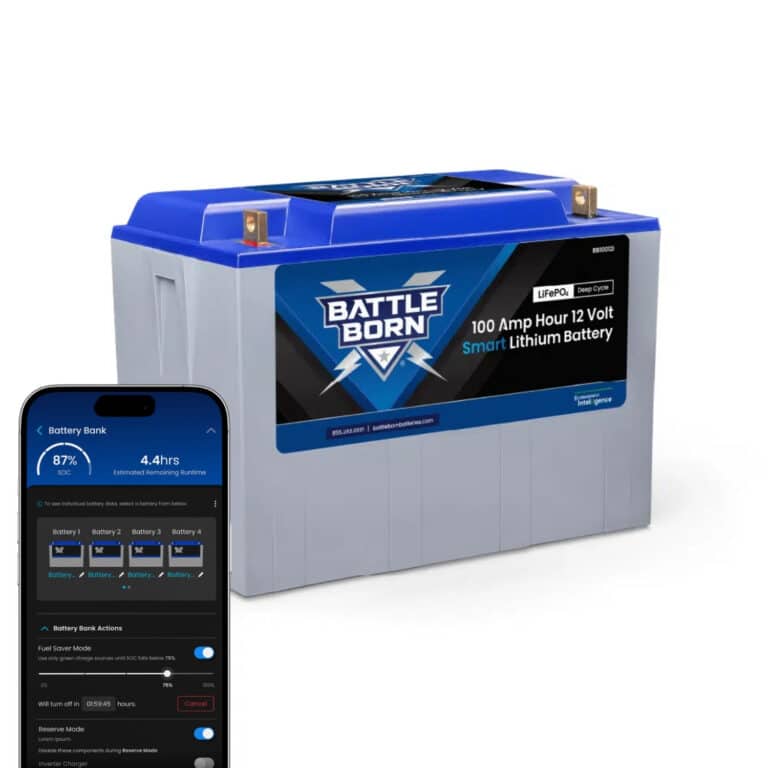

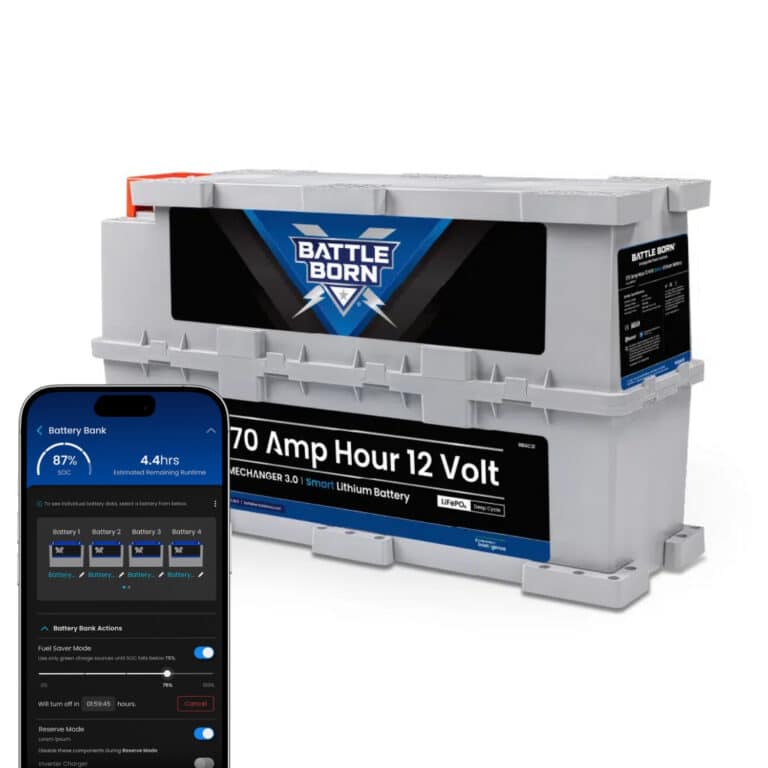




Ask a technical specialist now at 855.292.2831
Stay in the Know